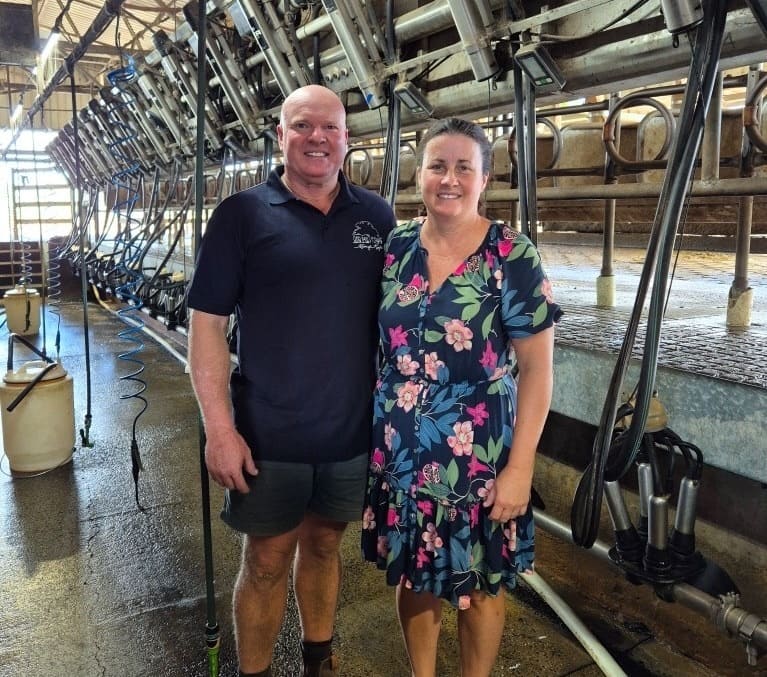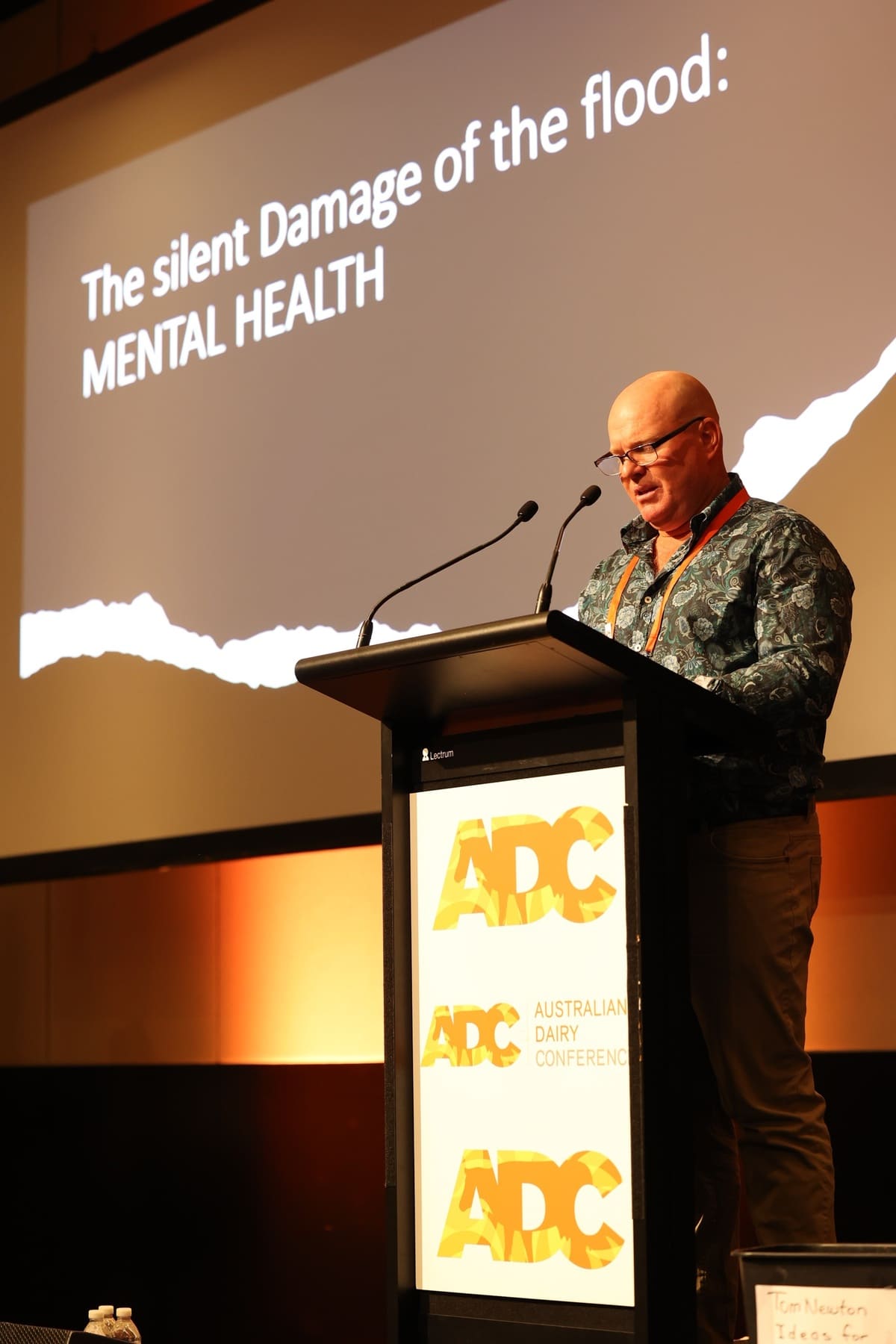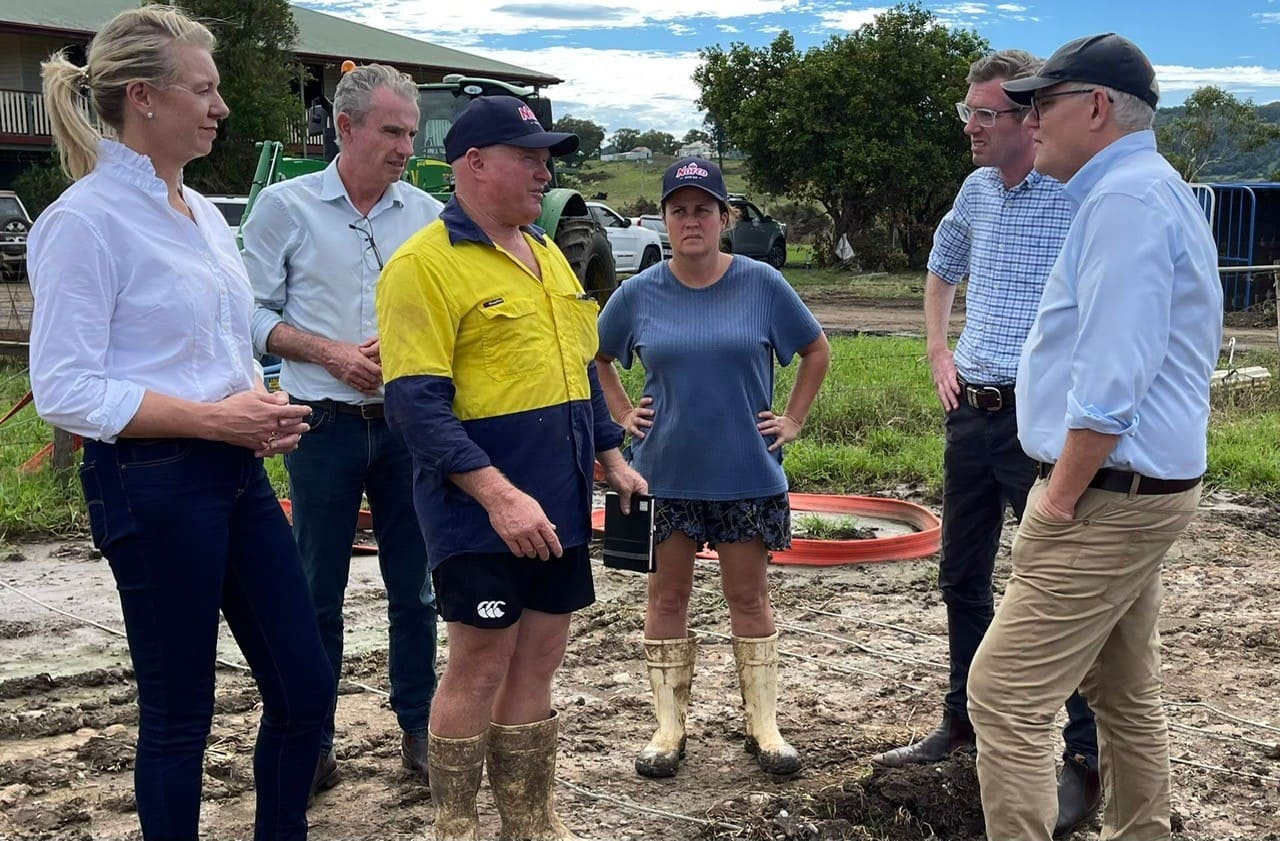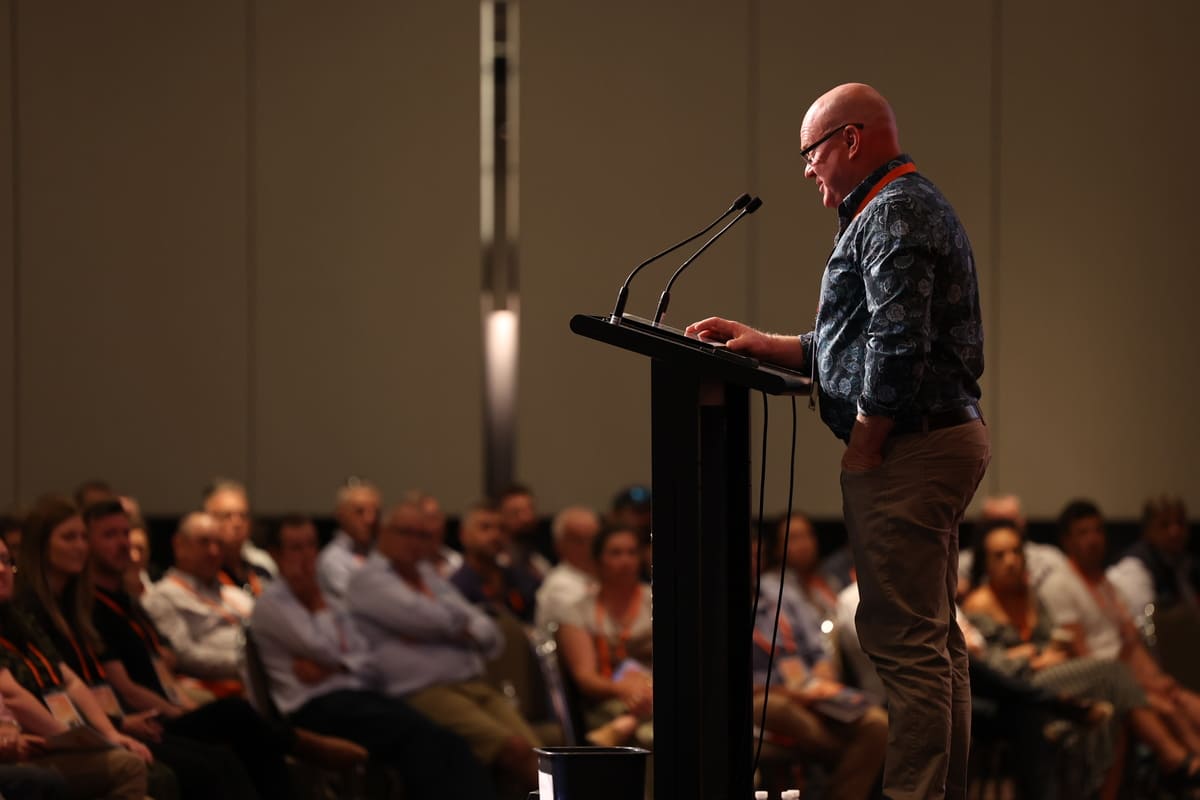Posted by on
11/02/2025
Lismore’s Paul and Sharon Weir have regained business strength – and personal strength – after the devastating 2022 flood event.
Floodwaters swirled eerily in the dark, silently and swiftly building momentum over paddocks and infrastructure before engulfing Paul and Sharon Weir’s dairy farm.
The family’s reflections on the 2022 floods that ravaged NSW’s Northern Rivers are harrowing, and much of Australia shared in their horror after a video of their dairy cows being swept away by floodwater went viral.
It was Paul Weir’s “worst day” - yet by generously sharing his story this fourth-generation dairyman hopes to support his fellow farmers doing it tough.
“There’s not a farmer in Australia who hasn’t been through a natural disaster, whether it’s droughts, fires, or floods, there are always going to be bad days in farming.”
“My worst day was extreme, but it’s important to talk about how to overcome these challenges, and the mental health issues that can develop – I want to bring these topics to the forefront and hopefully by sharing my perspective I can help others.”
Now, over three years on from the fateful event, Paul and Sharon have resumed their five-year plan of expanding their dairy and infrastructure, and are looking to the future with enthusiasm.
“I’m a glass-half-full type of person – there was never any doubt that we’d rebuild after the floods – and there’s no other region, or industry, I’d rather be in,” Paul smiles.
The best-laid plans, doomed
Paul was a keynote speaker at the 2024 Australian Dairy Conference, generously sharing his reflections on the disaster.
With the Weirs’ farm sitting at the catchment where five valleys merge, “our greatest asset is the river and rainfall, and it’s our biggest challenge”, Paul said.
The family had well-versed flood mitigation measures to ensure fodder, houses, the dairy platform, and cows remained safe during floods.
Yet the floods that rose on February 27 and 28, 2022, were unprecedented.
“In 1954 and 1974, the flood records were 12.38m, so our infrastructure was flood-ready at 12.4 metres,” Paul said.
With a flood prediction of 11.4 metres Paul, Sharon, and their son Matthew mixed up two days of feed in the silage wagon, and, expecting the dairy platform to be above the flood level, moved the milkers into the yard and closed the gate.
Paul, Sharon, and Matthew kept a regular check on the expected flood, and at 2.30am Paul returned to bed reassured that the river was still within its banks.
Just one hour later Sharon woke to water lapping their home.
What followed was a natural disaster that crushed livelihoods, destroyed herds, and demolished much of the Lismore township.
Addressing the crowd at the 2024 Dairy Conference, Paul detailed the gut-wrenching realisation of the enormity of the situation.

Paul sharing his moving story at the 2024 Australian Dairy Conference
In the darkness of the night Paul and Matthew made it to the dairy to lift what infrastructure they could.
Sharon attempted to check the calf shed, but was turned back due to the strength of the water.
“We returned to the house wading through water up to our chests, and in hindsight, none of us should have been in the water,” he reflects. “By the time I got home the force of the water was so great, I had to lunge for a veranda post – if I’d missed, I doubt I would have been here today.”
As the sun rose, so did a new wave of dread as they watched cows swim past their house.
With Paul and Sharon’s two other sons, Aiden and Josh, living in Lismore, Matthew rode their Jet Ski to town to collect the boys and assess the damage.
Together with a friend, Matthew subsequentially helped rescue 43 people that day, ferrying them to safety on his Jet Ski.
With no power at the dairy, half their silage destroyed, fences down across their paddocks, and stock unaccounted for, the ensuing days and weeks proved a lesson in community spirit.
“We had 160 cows that found safety on the dairy platform, and we’d milk them at a neighbour’s farm after we’d help him milk his cows.”
“As a district, we rescued and accommodated each other’s stock, and neighbours came together to help bury each other's dead cows.”
The Weirs lost 130 cows in total from the floods.

The Weirs’ experience captured the attention of the nation, including then Prime Minister Scott Morrison and colleagues.
Aside from the emotional and physical toll, the flood also derailed their business expansion and herd building plans.
Prior to the flood, the family was milking 400 cows, and was looking to nearly double that number with shed plans underway.
Paul acknowledges the lengths his Rabobank manager, Charles Hope, and the whole bank went to to ensure their ongoing business viability.
“The lengths Charles went to helping us after the flood was heartening. Not all banks would have supported us the way Rabobank did, and it still makes me very proud to be part of an organisation so committed to agriculture.”
Practically, Charles physically turned up, spending four days on a pressure cleaner on-farm, and from a business perspective, Paul said his help was invaluable.
“We had two businesses wiped out overnight, zero income capacity and a debt – how we were going to meet our bank commitments was a huge worry.”
In light of the situation, he said Rabobank took a customised approach, easing pressure on the family until they got back on their feet.
“I’ll always be grateful to Rabobank, and Charles, for the care and consideration they extended to us, and that’s the beauty of a bank dedicated to farmers, and having a dedicated manager such as Charles who knows us, knows our story and had confidence in our potential to rebuild.”
Looking to the future
Now, three years on, milk production is at a record high.
The Weirs are back milking 400 cows, their new shed plans are currently with council awaiting approval, and their re-build afforded them an opportunity to further flood mitigate by building capacity to lift infrastructure higher.
“Our five-year plan was to milk 700 cows through intensifying the business, and potentially expansion through land acquisition to follow,” Paul explains.
“We love this region, and were never tempted to move. We have reliable rainfall for growing grass and pastures, and our forefathers chose these dairy regions with good reason – whether it’s the Gippsland, Western Victoria, the Bega Valley or the Northern Rivers, these wet regions are excellent for dairy production.”
The Weir family’s new development will help ease some of their wet-weather challenges, and ultimately help boost production per cow.
“Heat stress is a local challenge, and for five to seven months of the year this impacts production, so the new shed will keep cows cool and help mitigate this issue.”
The shed will ensure cows are out of the mud, and remain dry and comfortable – helping combat hoof issues, and mastitis.
And with four sons, Matthew, who is on farm full-time, and Aiden, Josh and Samuel working off farm, but contributing on weekends and holidays, Paul’s strategy is one of continued dairy expansion.
“I’m excited for the future of dairy, it’s a great cash flow business – that monthly milk cheque allows for expansion and investment back into the business, which is unique in an agricultural pursuit.”
“Dairy is a wealth creation vehicle – cash flow provides borrowing power which facilitates growth – if you love cows that’s a bonus, but as a business platform, I don’t think you can beat dairy.”
Paul and Sharon purchased their first dairy 30 years ago, and have since purchased three additional farms.
The new shed will signify an innovative new direction for the business, and an opportunity for the four boys to take a lead.
“The boys have grown up with my philosophy, and I don’t see any reason why they wouldn’t continue expanding, the business fundamentals that underpin a dairy enterprise are exciting.”
“There’s a shortage of milk production, and South East Queensland and the Northern Rivers have one of the fastest growing populations. With the pricing fundamentals of supply and demand at play I think there’s huge potential for the industry – both local and nationally.”
Australian Dairy Conference
Paul’s reflections at the 2024 Dairy Conference had the room deeply moved, and visitors have the opportunity to this week visit his farm as part of the 2025 Australian Dairy Conference program.
“People seemed to resonate with my story, so prior to the conference there will be a bus dedicated to our farm tour, and hopefully it will be an opportunity for fellow dairy farmers to learn, connect, and showcase a positive outcome that may help others in the industry.”
Paul and Sharon will be in attendance at this week’s conference, being held on the Gold Coast, and Paul said he was looking forward to it.

Paul at last year’s Australian Dairy Conference
“It’s always valuable getting together with like-minded people with a thirst for knowledge, learning about the latest innovation, technology, and best practice.”
“The people at The Australian Dairy Conference tend to be positive thinkers, and it’s always a great, thought-provoking catch-up.”
